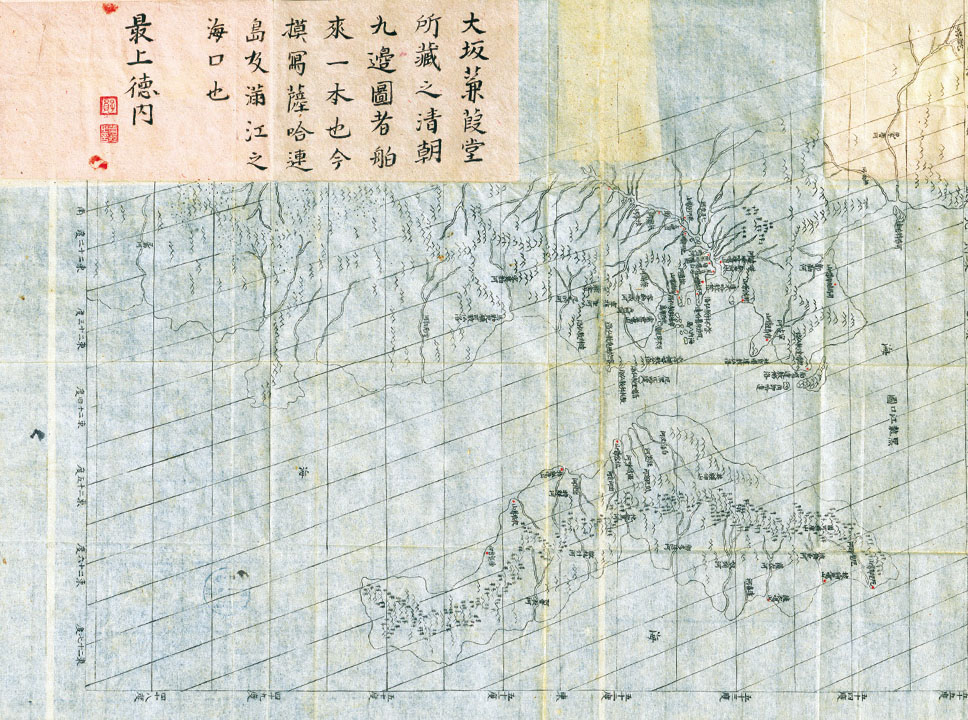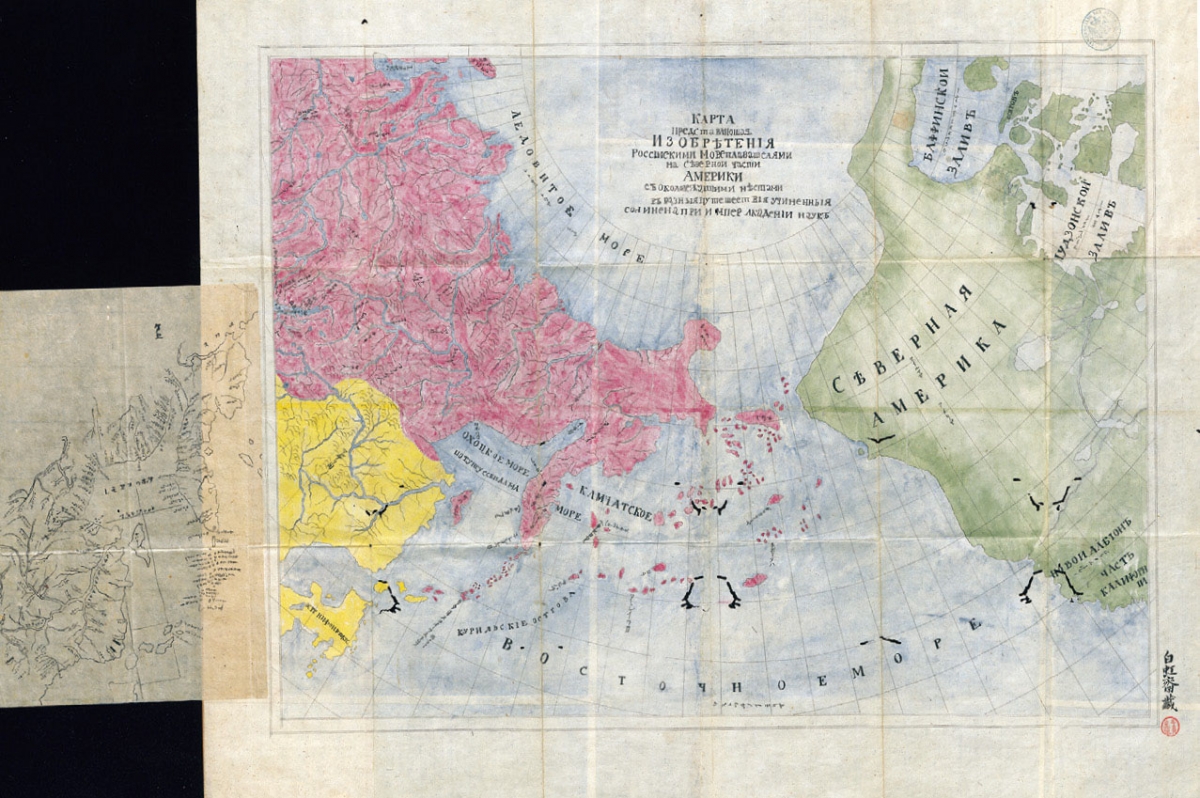A user-centred reinterpretation of the Siebold incident
On the afternoon of 16 December 1828, Philipp Franz von Siebold, a handsome German surgeon in the service of the Dutch commercial factory in Nagasaki, said goodbye to his Japanese wife and locked himself in his room to shuffle papers throughout the cold of the night. He used bundles of tracing paper to copy maps of Hokkaido, Sakhalin and the Kuriles compiled by Japanese explorers. His friend the interpreter Yoshio Tsujiro had warned him that his house would be searched the next day. A few months earlier, the ship ‘Cornelius Houtman’ carrying Siebold’s belongings had been damaged by a storm in Nagasaki bay. Upon inspection the Japanese authorities had found a linen cloak with the emperor’s crest as well as maps of strategic importance. Siebold’s collaborators, chief among them the shogunate’s official geographer Takahashi Gensuke, were arrested, while Siebold was placed under house arrest and eventually expelled from Japan. This is now known as the Siebold incident, and has been used to draw conclusions on the strategic status of maps in this period. However, the signs of use on the maps from Siebold’s collection, now kept in the Leiden University Library, show a different perspective on the incident. The material state of these maps as cartifacts show the traces of shared topics of interest and collective effort towards increasing knowledge. Some of these maps feature in the exhibition Mapping Japan that I am co-curating with Martijn Storms and will open in SieboldHuis in Leiden in September 2017. In this short article I would like to briefly lay out the argument for reconsidering the meaning of the Siebold incident.
Cartographic conversations
Siebold arrived in Japan during a tumultuous time at the beginning of the nineteenth century. This period of Japanese history is usually discussed in antagonistic terms between a struggling administration and various incursions by foreign ships. In this context, cartographic knowledge was at the forefront of national security. But that was the shogunate’s perspective. In practice, Nagasaki interpreters mediated a limited form of knowledge exchange between Japanese intellectuals and Dutch traders. Maps were part of their intellectual conversations. Most of the time the exchange of knowledge occurred in small social circles that forged what social historian Eiko Ikegami calls ‘enclave identities’. Maps were often exchanged as part of the social protocol of Chinese literati culture, where penmanship and learned references were appreciated. An example is the meeting between the explorer and map-maker Mogami Tokunai and the collector and patron Kimura Kenkado at the latter’s home in Osaka in 1801. Mogami copied an imported Chinese map from Kenkado’s collection that had originated in the Jesuit-led survey of China during the reign of the Kangxi emperor (fig.1). Mogami was not interested in continental China but in the territories north of Japan, including Sakhalin, which were perceived as under threat of Russian occupation. Mogami had visited this area himself, and corroborated other Japanese explorers’ maps with Russian and European maps in order to extract the best possible knowledge of the area (fig.2). The maps in figures 1 and 2 show that there was a branch of intellectual endeavour that was compatible with Western science in its search for accurate knowledge. This was nevertheless understood within the intellectual paradigm of Chinese culture, for which ‘Dutch knowledge’ was a new branch of a millennia-old canon.
Nagasaki interpreters shared this appetite for knowledge. We can get a glimpse of it from the journal of Grigori Langsdorff, medic of the Russian expedition lead by Rezanov and Kruzenshtern that reached Nagasaki in 1804:
The interpreter sent to us on this day spoke more freely than any who had come before. He considered all the strict regulations of the Japanese government as extremely ridiculous, lamented that he was himself a Japanese, and wished very much to travel and see foreign countries. He regretted the short-sightedness of his countrymen, imputed it to the education of the emperor and the great magistrates, and said that the subjects must be blind when the rulers had no clear ideas, and were not in a situation to acquire any. Men, he said, are not born merely to eat and drink, but also to instruct and enlighten themselves.1
Siebold entered into the social fabric of intellectual exchanges in Japan as a scientist exchanging medical but also geographical knowledge with his peers. On his visit to Edo as part of the Dutch trading delegation, Siebold befriended the shogunal chief astronomer, Takahashi Kageyasu, also known as Globius.2 Siebold gifted Kageyasu a Dutch translation of James Kingston Tuckey’s Maritime Geography and Statistics, in which he included a dedication to Globius, addressing him deferentially with Most Honourable Sir, as he would a fellow Dutch scholar. Kageyasu also received from Siebold a copy of Kruzenshtern’s Voyage Round the World in the years 1803, 1804, 1805, & 1806 that included maps of Japan and its neighbouring regions. In exchange, Kageyasu gave Siebold copies of Ino Tadataka’s comprehensive map survey of the Japanese archipelago as well as other maps of the islands north of Japan. Siebold was thrilled by this exchange but he probably understood that these maps were a sensitive issue. Upon meeting another important cartographer in Edo, he wrote the following journal entry not in his usual Dutch, but in Latin – a language which the Japanese interpreters could not decipher:
Most happy day! A Japanese man named Mogami Tokunai had been asking to meet me for two days, and showed exquisite learning in mathematics and all branches of science. After discussing various Sino-Japanese as well as European mathematical issues, he showed me under sacred seal of silence maps that delineate the area of the Ezo ocean and Karafuto island and made them available for my use for a while –certainly a most precious treasure.3
This passage shows the larger context of the search for accurate knowledge that moved from mathematics to geography. Mogami also gave Siebold that map he had copied from Kimura Kenkado so many years before, thereby including Siebold in the social protocol of Japanese intellectuals.
The cartographic network into which Siebold entered also probably provoked the Siebold incident. Some of the maps given to Siebold by Kageyasu had been copied by the cartographer and explorer Mamiya Rinzo. It is likely that an animosity between Rinzo and Kageyasu led to the former denouncing Siebold as a spy in a letter to the authorities even before the maps were discovered on the storm-damaged ship. Part of the confusion was due to the similarity between the spelling of Siebold’s native land of Prussia with that of Russia, leading to a suspicion of espionage. The Japanese authorities did not fully grasp the nature of scientific exchange, and were bound to confuse it with spying.4
User data then and now
As shown above, the geographical knowledge circulating in this network was socially inflected, since it was determined by a set of social conventions. This amounted to a form of distributed cognition, which meant that geographical knowledge was not deposited solely within the maps as cartifacts, but permeated the social connections of a diverse group of Japanese intellectuals. The actions of the authorities in the case of the Siebold incident were therefore not aimed primarily at restricting the circulation of the maps themselves. Instead, their aim was to curtail knowledge exchange, to unravel the tightly knit network of intellectual collaboration that posed challenges to the political rulers’ intellectual authority.
The stake of this exercise of reinterpretation is to give back agency to the various actors involved in the exchange of geographic knowledge, and to describe that exchange in terms of their own intellectual and social systems. Japanese geographers were just as disciplined in their search for knowledge, and were keen to share and compare their results with their fellow geographers, whether Dutch or Russian. Though the Siebold incident might seem to indicate otherwise, the norm was for friendly exchanges of scientific knowledge. Considering such examples require a horizontal way of looking at global history that decenters the Eurocentric narrative by acknowledging the synchronicity and intermeshing of multiple ‘movable centers’.5 By allowing ‘movable centers’ we are beyond the frame of Western science and its subalterns. This was an exchange made on equal terms, a form of intellectual collaboration.
Maps were vehicles of knowledge exchange and social intercourse, making possible global connections that are still continuing now. Although the technology has changed, we are still dependent on maps to understand our place in the world. The user data on present-day Google maps are the record of vernacular practice independent of official regulations. This user data has been the focus of concern over the security of private information. But what if instead we would look at this data as a record of the vernacular use of the map format? We could recover this silent data not for the purpose of anonymous tracking, but in order to reconstruct the stories of individual users and their understanding of the role of maps. Signs of use on maps of the past show us how knowledge could be appropriated and customized in the context of unofficial social connections. It is time to consider digital maps’ user data as equally potent testimonies to our understanding of the world now.
Radu Leca, Affiliated Fellow, IIAS (lecaradu@gmail.com).

